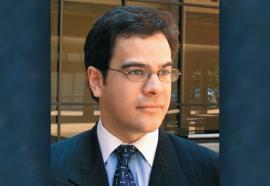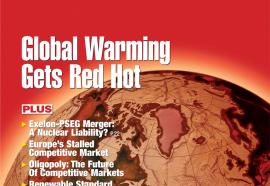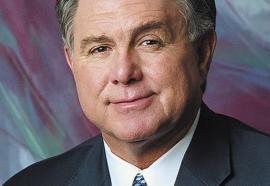Commission
Perspective
Renewable Energy in the 21st Century:
Perspective
Renewable Energy in the 21st Century:
State involvement in promoting renewable technologies has profound implications for the future of the energy industry.
Election-year posturing seems to have prevented the federal government from reaching consensus on a number of energy issues ranging from standard market design to global warming, MBTE to Kyoto, ANWR to nuclear waste disposal.
Commission Watch
Commission Watch
What everybody missed in setting up the regional grids.
While the electric utility industry has largely agreed on what elements to include in a standard market design (SMD) to govern wholesale power trading in a given region, recent experience shows that the regulators from time to time have overlooked a number of things.
Efficiency and Demand Response: Twins, Siblings, or Cousins?
Analyzing the conservation effects of demand response programs.
Does demand response increase or decrease overall electricity usage?
The Global LNG Gamble
The Geopolitical Risks of LNG
To many energy-industry analysts, 2005 is a make-or-break year for the U.S. gas market. If we don't have at least several liquefied natural gas (LNG) terminals in construction by the end of the year, the country arguably will face serious gas-supply shortages and price spikes beginning in about 2008.1
Monopolists in Our Midst
What happens when economists and state regulators give up on electric restructuring?
Alaskan Gas Development: One Pipeline, Two Systems
FERC may have to carve out a special set of rules if it wants to bring Arctic gas south to the lower-48.
The Need for Nuclear Now
States will play a significant role in the resurgence of nuclear power plants in America.
At times, various conditions align and set the stage for achieving goals that may have appeared to be unreachable. Last summer, the Boston Red Sox were all but eliminated from contention, but then won an amazing stretch of baseball games that resulted in a World Series championship.
A similar scenario can be applied to the U.S. nuclear industry-producer of a steady, low-cost, environmentally important electricity source poised to thrive with the possibility of new plant construction in the not-so-distant future.
Europe: Picture of a Stalled Competitive Model
Several hurdles remain to further liberalization and full competition in the electricity sector.
Greenhouse Gas Emissions: A New World Order
Pressure for national legislation builds as the Northeastern U.S. goes it alone and carbon trading takes off in the European Union.




